
The term Web 3.0 with the benefits of its 3rd generation technology is widely considered to be the future of the internet and to break away from the centralized status quo. However, there have been heated debates of late with some claiming it will still be controlled by the venture capitalists and whales. They argue that the tech is still relatively centralized, slow, and unable to reach mass adoption.
One of the few is the dubious Jack Dorsey, CEO of Twitter. You have to wonder what his motivation was for tweeting his opinion...
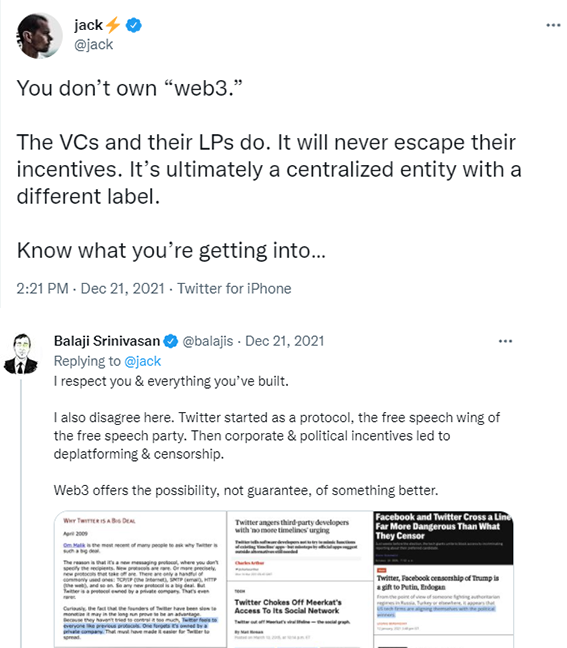
Image source: Twitter
Dorsey’s tweet received a lot of attention, positive and negative. A lot of people in the Ethereum and Defi communities bashed him for it because they viewed it as criticism aimed at Ethereum. Some also pointed out that Twitter's centralization and censorship are exactly why they're so bullish on Web 3. There are also a lot of VCS, Founders, and other crypto personalities who took issue with Jack’s statement.
In actuality, Web 3 is our best hope of breaking free from the centralized status quo and overlords. A reality where our data is harvested for profit by companies that willingly pull our access at a moment’s notice. Let’s revisit some of the histories of how the internet came to be and where we are today.
In The Beginning, The Internet Was Decentralized.
Let’s go back in time to put it in perspective. The original internet plan was not to be centralized. In 1969, ARPANET was a project by the US Department of Defense to establish a computer data communications network that could withstand unforeseen events and disasters. Therefore, it must be decentralized so that if one part of the system fails, the rest can still function. It must be able to communicate using peer-to-peer interconnectivity without relying on a single computer.
Initially, ARPANET benefited not just the military but also research institutes, so it had its origins in the academic community though it was a military project. The system slowly evolved, so it was not immediately adopted for commercial use. Instead, in the early 1980s, it was adopted by universities aimed at promoting research and education and was called the NSFNET project.
The best way to do this was to use an interconnected network of computers that can provide a way to collaborate and share information. So the internet services were built on open protocols controlled by the internet community. There was no central authority, and every computer was independent of the other. If one server is not working, users can always dial up another server.
By today’s standards, the organization of this protocol could be viewed as chaotic and inconvenient however it was decentralized. It was primarily unchartered and empty until the 1990s, before the technology pioneered by the ARPANET project became the backbone of the internet. A new galaxy of communication is ready to be explored and populated.
Eventually, ARPANET and NSFNET would be decommissioned, thus paving the way for the commercialization of the internet that eventually led to centralization. Notably, the term “Internet” was brought about by a blend of the words “interconnected” and “network” and thereby called the Internet ever since.
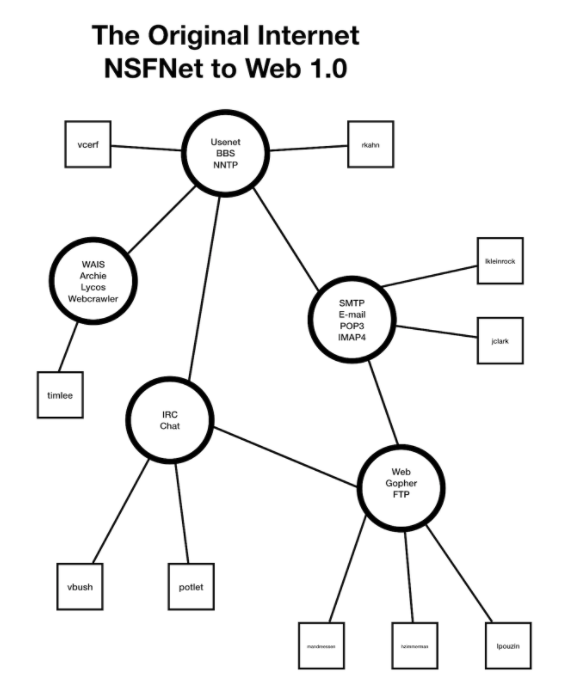
Image source Hackernoon
From The ARPANET To The Internet.
In the ‘90s, Sir Tim Berners-Lee is credited with developing a linked system that became the World Wide Web with HTML and access to resources called websites. This allowed for the retrieval of all that information across the web. Web 1.0 is also called the static web and did have its limitations. It wasn’t user-friendly and was a one-way information highway.
No algorithms could dynamically serve pages, and the web pages themselves were also elementary. The functions that served the most purpose were email or real-time retrieval of news and the like. Users could not interact with the web pages, and applications were unheard of, so it was a Read-only internet.

Web 2.0 - The Social And Centralized Internet
Around 2005 came the concept of Web 2. We saw a paradigm shift in how we used websites during this period through advancements in web technologies such as JavaScript, CSS, and HTML5. Interactive and rich websites started to increase. These web platforms would allow the user to generate their own content and be a much larger part of these websites as a whole.
If Web 1 was a Read-only web, then Web 2 can be thought of as a Read-Write, where the users on these platforms were also fundamental to the content. As commercial interests grew along with internet use, many platforms emerged that became known as social media, and it was driven by innovations in technology, such as mobile phone apps.
The emergence of cloud computing was also a virtual collection of servers that provided services to users. Companies that have flourished in the Web 2 environment include Facebook, now Meta, Google, YouTube, Twitter, Uber, etc.
These companies have generated trillions of dollars of value for their shareholders by effectively leveraging user data from billions of people worldwide. They've transformed the way we live our lives, from the way we order food to the way we hail rides, from the way we keep in touch to the way we pay online.
Unfortunately, society, by and large, has become overly dependent on these platforms, and when they move from “attract” to “extract,” their users, both individuals or businesses, suffer through lack of privacy and autonomy or platform risk, meaning, the platform has the power to destroy your business running on it. This conglomerate is predominantly a trillion-dollar digital advertising business, with ‘we the users’ as the product that fuels this machine.
Essentially, Web 2 is owned by these companies, and they control the platforms and are the gatekeepers of all information. It is inherently centralized with these companies creating walled gardens of value that we can't participate in, and this is where Web 3 comes in.
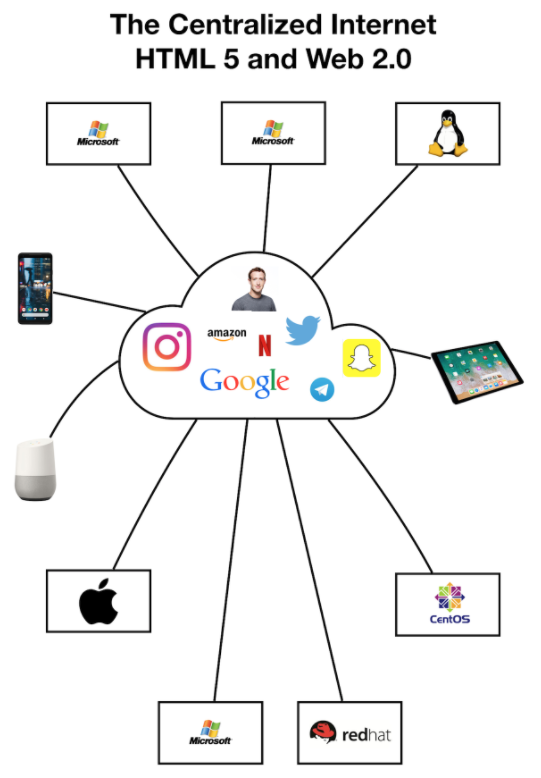
Image source Hackernoon
So, How Centralized Is Web 2?
In order to best understand why Web 3 has so much potential, we have first to appreciate just how centralized Web 2 actually is. Currently, the web functions on what is called the client-server model. More specifically, when you want to visit a website, open a mobile app, or watch a video, you'll be requesting information from one centralized source. This is a server, and these are usually controlled by the company whose service you're using or the website you're visiting.
This Server also contains all of the required data to make the website or service run. Data that is often comprised of our data and a centralized server controls even the process of finding that server. These are DNS or domain name service servers that act as the backbone for domain routing on the internet. Essentially, when you type a domain into your browser, the request is sent to a DNS server that will then tell your computer exactly where this information can be found.
These DNS servers are usually controlled by another centralized group of companies including the likes of Google, AWS, Cloudflare, etc. What this means is that the internet is inherently centralized; everything that you do online can effectively be limited by those who control those services.
There are problems associated with this because it has a centralized point of failure; Centralized servers can go down, sometimes for extended periods of time. And in those times people can't access that data. There's not really much that you can do, given that these centralized servers contain all that user data and contain the code, which interacts with user clients, and those servers are incredibly lucrative to hack. Data theft is big business in cybercrime circles.
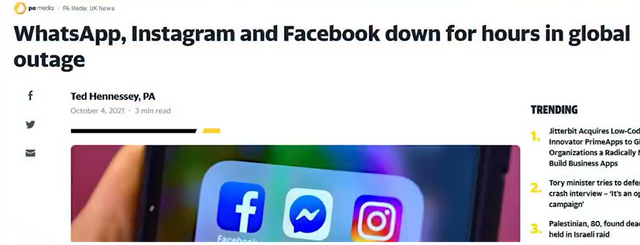
You need to trust companies like Amazon that have your personal data to keep it safe. It’s a “trusted” system. There is also the risk that the data being sent to your devices could be compromised through software supply chain hacks. Hackers gain access to the provider’s server upstream of the software supply chain and insert malicious code. That's then passed down along the chain because the other participants trust that the software is safe.
Then when it comes to the issue around the permissioned nature of Web 2, it's become a real issue when you're using services like Facebook, Instagram, Twitter, YouTube, PayPal, etc. You're only allowed to use them because they let you.
They can restrict your use, or boot you off the platform at a moment's notice, without any explanation. De platforming has been going on for years now and there is very little that can be done by the user.
The Web 2 social media and many Fortune 500 companies have developed their entire business models around monetizing our data. This value is not shared unless you're a shareholder. This centralization of control and value is the reason why people are dying for an alternative.
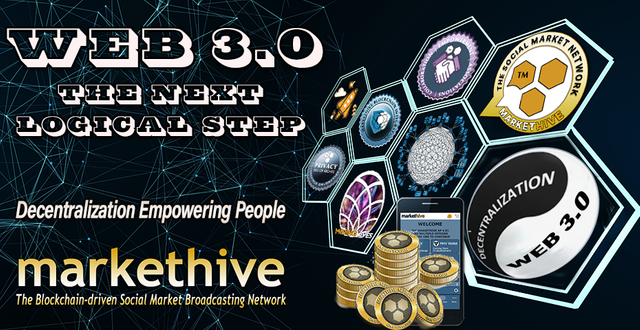
Enter Web 3.0
Web 3.0 is the next generation of the internet which people envision will be more decentralized and permissionless. One that's built on decentralized protocols, where users help with content creation and the governance of the web itself. They also have the ability to own a part of the network, so you can think of it as a Read-Write-Own Internet.
There are already several technologies that could serve as the backbone for a Web 3 world. Most point to blockchains like Elrond, Cardano, or Ethereum, for example, but other distributed technologies like IPFS can also be used to decentralize networks.
Thousands of dApps (decentralized applications) are already being built in the Web 3 environment. These often include native tokens to add value to the application to those who hold the tokens. These native crypto assets allow those who participate in the network to share in the value generated from it.
Web 3 promises a decentralized alternative where we are all users, owners, and developers. This quote from Fabric Ventures sums it up beautifully,
“Web 3.0 enables a future where distributed users and machines are able to interact with data, value, and other counterparties via a substrate of peer-to-peer networks without the need for third parties—the result: a composable human-centric & privacy-preserving computing fabric for the next wave of the web.”
Web 2 Verses Web 3
The main difference between Web 3 and the Web 2 era is that in Web 3, there are no centralized databases where you store the application state. In the case of blockchains, it's stored on a decentralized ledger where distributed nodes all agree on the state of the network. This article explains the architecture of Web 3 in more depth.
The takeaway from Web 3 architecture is that the back-end infrastructure is inherently decentralized across nodes with the singular purpose of maintaining the network. If one of these nodes goes down, the network still runs. If one of these nodes is hacked, it doesn't affect the state or security of the broader network.
Moreover, a distributed network is cryptographically secure. There is no way someone can underhandedly alter a smart contract code unless they have the keys. Any updates to the smart contract are time-stamped and immutably stored on the blockchain forever.
The cryptographically secure nature of a decentralized blockchain means that you don't have to trust anyone with your data. You don't have to trust that they keep their service safe and that their apps won't have malicious components. The code is fully open-source and auditable for everyone to see.
Furthermore, there is the ability to build on top and evolve to something better, as it is all open-source, with no need for third-party developer API access. What gets people so passionate about Web 3 is that you can shape the direction of these applications, and you can share in their success. Economically, Web 3 allows a system to flourish where participants can work together towards a common goal - network growth and token appreciation.
There are pros and cons to a centralized Internet. The pros are that it has allowed the internet to expand due to the services provided by the ISP’s and also the popularity of social media platforms, convenience, and usability.
Web 2 has transformed the way we view the world, but the cons are that it’s also enslaved us to a system that enriches a chosen few. Since it has been centralized, there is not much choice for users. A user’s access to the internet is at the mercy of their provider and the platform. This is a point of failure, not something the original internet was designed for.
Addressing Venture Capitalist Concerns
Let’s alleviate Jack Dorsey's concerns about VC money. The most reputable projects will have some reasonably strong vesting schedules for these tokens to make sure that these early-stage investors don't just dump the tokens on the open market. It serves neither the project nor the VC's purposes to trash the reputation of one of their investments by dumping on retail.
And then, even when these tokens are unlocked, and these VCs can vote on protocol governance, they tend to have the same long-term goals as the retail investors who invest in the tokens and protocols. They want a long-term appreciation of the value of the tokens, and if they push through controversial proposals that drive down the adoption and value of the protocol, this will damage their long-term interests.
The beauty is that everyone can share in the incentives, not just venture capitalists or shareholders. Decentralized technologies will trump the centralized status quo, whether, in the case of finance with crypto or the entire internet with web 3, including social media and market networks. When a community comes together to build something that they all benefit from, it's destined to succeed.
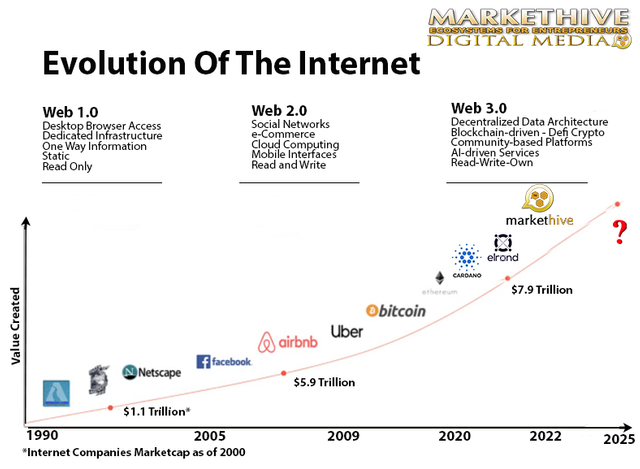
Who Is Genuinely Challenging The Status Quo?
Markethive, the blockchain-driven ecosystem for entrepreneurs, has already successfully bypassed the centralized web services, like AWS and Microsoft, and operates on its own cloud system. The new login system Markethive has developed relinquished the need for 3rd party APIs that are potential vulnerabilities in Web 2 and threaten our freedoms.
Currently, Markethive is expanding its cloud system, called Mining Hives, worldwide. This means all data about Markethive and its users will not be stored on servers owned and controlled by a centralized entity.
Instead, it is a distributed database on the Markethive Blockchain with no single point of failure and no internet disruption or censoring by dictatorial authorities who may decide to shut off the internet.
Web 3 gives us a better chance at building a more inclusive internet that respects all who use it. Decentralized networks can win the third era of the internet for the same reason they won the first era: by winning the hearts and minds of entrepreneurs and developers.
Web 3 is an opportunity to distribute the wealth amongst the rest of us generally paid only to shareholders. Markethive stands tall and is dedicated to delivering the emerging environment of Web 3 to its community; one of self and financial sovereignty.
Instead of acquiring a few significant venture capital investments, Markethive has made it possible for the community to obtain a stake in the company. Known as a convertible note, a small loan called an ILP is executed as a smart contract and acquired by upgrading to the early adopters' loyalty program, Entrepreneur One, for as little as $100 per month.

For a limited time, there is a lucrative advantage to supporting Markethive with the E1 Upgrade, explained further in this blog by the CEO of Markethive.
Markethive and Markethive Media is an international company that represents everyone and will play a prominent role in the re-invention of the social media and marketing space to preserve and nurture the entrepreneurial spirit. It’s empowering the community by integrating Blockchain and cryptocurrency in a decentralized environment. Markethive has no agenda, and its heart and soul are freedom, liberty, financial sovereignty, and entrepreneurialism.


Originally published @ Markethive.com